| Designation: | T-84 |
 |
|---|---|---|
| Manufacturer: | Kharkiv Morozov Machine Building Design Bureau - KMDB | |
| Product type: | Armoured Vehicles | |
| Name: | Main battle tank |
The T-84 main battle tank is the result of continued main battle tank development by the Kharkiv Morozov Machine Building Design Bureau, which is Ukraine's leading design authority for armoured fighting vehicles.
The overall layout of the T-84 main battle tank is conventional with the driver’s compartment at the front, fighting compartment in the centre and power pack at the rear. The driver is seated in the centre and has a single-piece hatch cover that lifts and swings to the right. In front of this are three forward-facing periscopes, the centre one of which can be replaced by a night driving device. There is an escape hatch in the hull floor behind the driver. The commander is seated on the right and the gunner on the left both provided with single-piece roof hatches.
The T-84 main battle tank is based on a T-80UD, but has a number of advanced features which distinguish it from the T-80UD. These include the following:
- new all-welded turret;
- explosive reactive armour of new generation to give more protection against both chemical energy and kinetic energy attack over the frontal arc;
- thermal imaging sight;
- 1,200 hp engine rather than a 1,000 hp engine the T-80UD is powered by;
- digitisation of the electronics packages associated with the fire-control system;
- optronic countermeasures system;
- auxiliary power unit;
- muzzle reference system;
- navigation system;
- enlarged side skirts to give additional protection of the hull sides and running gear components against attacks by infantry armed with short range anti-tank missiles.
The T-84 MBT armament includes a 125mm gun, 7.62mm coaxial machine gun and 12.7mm anti-aircraft machine gun. The tank crew is also equipped with sub-machine guns, hand grenades and a signal pistol.
The main armament comprises a stabilised 125mm KBA3 smoothbore gun fed by a carousel-type automatic loader and fitted with a thermal sleeve and fume extractor (bore evacuator).The gun is stabilised in both elevation and traverse. The main gun has a quick-replacement barrel which can be changed under field conditions without the need to remove the gun from the tank.
Turret traverse is electric while gun elevation is hydraulic. The turret can be slewed through 180° in less than 5 seconds, as the rate of traverse of the turret on the hull is up to 40°/s. Manual gun and turret controls are provided for emergency use.
The T-84 has a total of 40 rounds of separate loading ammunition (projectile and charge), of which 28 rounds are placed in the automatic loader. Seven rounds are carried in the hull to the right of the driver. Mounted in the turret bustle is an armoured compartment with stowage for an additional five rounds. Types of ammunition that can be fired by the gun include APFSDS (armour-piercing fin-stabilised discarding sabot), HEAT (high explosive anti-tank), HE-FRAG (high explosive fragmentation) rounds as well as laser beam-riding guided missiles.
The specific feature of the tank is that it is fitted with a guided missile system to enable the main gun to fire a laser guided missile and engage targets out to 5000 m. The missiles are stowed in the automatic loader in the same way as conventional ammunition.
The missile can be fired while both the tank and target are moving. The missile has a tandem warhead to defeat targets fitted with explosive reactive armour as well as modern spaced armour, optimised against HEAT attack.
Although the primary role of the missile is to engage battle tanks and other armoured vehicles operating at ranges beyond the effective range of the tank gun firing conventional ammunition, it has the potential for a considerable number of other uses. For example, the missile-armed helicopter poses a very dangerous threat to the tank and is very difficult to hit because of its small size, high speed and manoeuvrability. The guided missile system gives the tank a useful capability against hovering helicopters firing stand-off missiles, which is a decisive factor in its favour, as, obviously, the tank must be able to take some effective action against anti-tank helicopters itself and not rely on other weapons always being available to protect it. With the advance of technology guided missiles will most probably be able to engage even fast-moving and agile targets. Nowadays the guided missiles can also be fired against other battlefield targets such as pillboxes as well as against various soft targets such as buildings and bunkers.
The coaxial machine gun can be aimed and fired from either gunner's or commander's station.
The anti-aircraft machine gun is mounted on the commander's cupola and is intended for use in the ground/air and ground/ground roles being aimed and fired while remaining in the vehicle under full armour protection from the commander's station. The machine gun can be elevated from -5° to +70° and traversed through +/-75° to the right and left of the vehicle longitudinal axis, or through +360° together with the tank turret. The machine gun is fitted with a vertical stabilisation system providing stabilisation in the vertical angle range of -3° to +20°.
The T-84 is fitted with an integrated vehicle protection system, which includes passive armour, explosive reactive armour array as well as a number of other tank protection devices that are optimised against modern anti-tank weapons and make the tank considerably less vulnerable to the full range of anti-tank weapons.
The armour protection of the T-84, which includes advanced multi-layer armour and built-in third generation explosive reactive armour package for the turret and chassis, provides to the T-84 a high level of battlefield survivability. The main armour is a laminated ‘sandwich’ of armoured plate and ceramics which gives the tank superior ballistic protection against most forms of attack greatly reducing penetration and behind armour effect. The hull and turret of the T-84 over the forward arc are fitted with the latest generation Nozh explosive reactive armour package which gives protection against both chemical energy and kinetic energy attack (APFSDS and HEAT-type projectiles). In addition to being fitted to the hull and turret, explosive reactive armour panels are also fitted either side of the hull front to provide lateral protection to each side of the driver’s compartment. The explosive reactive armour is so efficient against the chemical energy attack that sometimes the tank can be hit by an enemy HEAT projectile without the crew being aware of the damage until much later. The explosive reactive armour system is of a modular design so that it can be easily replaced or upgraded allowing new explosive reactive armour developments to be incorporated in the future when this becomes available. The main armour and the explosive reactive armour together ensure superior protection against sophisticated modern anti-armour weapons.
As top attack weapons pose now a series and deadly threat to battle tanks, the turret roof between the commander’s and gunner’s hatches is provided with additional protection against top attack weapons.
The tank hull sides are covered with large rubber skirts to give additional protection against man-portable anti-tank weapons of enemy infantry.
The tank overall survivability of the T-84 is further enhanced by an optronic countermeasures system which is designated Varta (which means Guards). The Varta system consists of three key subsystems: the laser threat warner (to give warning of impending attack by laser-guided weapons), the infra-red jammers and the smoke/aerosol screen laying system.
The laser threat warner includes a control panel, a control unit and four laser threat warning sensors (two precision sensors installed on the forward part of the turret roof and two coarse sensors mounted on the top of the turret in its rear part) activated by laser range-finders, laser designators or precision-guided munitions fitted with a laser guidance device. The warner enables the tank react to threats in a timely manner.
The infra-red jammers introduce a spurious signal into the guidance circuitry of the incoming missile through continuously generated coded pulsed infra-red jamming signals. This makes it possible to decoy away incoming anti-tank guided weapons.
The smoke screen laying system can operate either as a part of the above-mentioned Varta optronic countermeasures system or as a self contained unit. The smoke screen laying system includes 12 smoke grenade launchers and a control panel with grenade firing buttons. The grenade launchers are electrically operated and are grouped into two banks mounted on either side of the turret, each bank being provided with a cowl. The grenades can be launched either automatically (in case of receiving a signal from the laser warning system about a potential threat) or manually (from the commander's or gunner's station).
Taking into account the ability of thermal imagers to operate through conventional smoke screens and some other obstacles to vision, aerosol grenades can be used instead of smoke ones to lay an aerosol screen that the thermal imagers cannot see through.
The T-84 can lay its own smoke screen by injecting diesel fuel in the engine exhaust (i.e. by using so-called smoke emitter).
As an attack by laser weapons becomes a growing danger on the modern battlefield, the T-84 vision devices are designed so that the operator’s eye is protected from direct attack by laser damage weapons.
The overpressure-type NBC protection system protects the crew and inner equipment of the tank against the nuclear weapon effects, radioactive dust, toxic agents and bacteriological materials.
The radiation shielding is designed in the form of a liner fixed on both internal and external surfaces of the tank to give protection against radiation from nuclear explosions. Spall liners are also fitted greatly reducing behind armour effect.
To the right and to the left of the driver’s seat are pillars which strengthen the hull in the event of the vehicle running over a mine.
In the overall vehicle design, the designers have laid great emphasis on the urgent need to reduce the signatures (thermal, radar, acoustic etc) of the tank. In particular, the T-84 MBT power pack compartment features thermal signature reduction technology, as its top deck is fitted with special heat insulation devices, this resulting in a low thermal signature of the tank.
To defeat detection by battlefield radar, anti-radar coating is provided and the tank turret is fitted with a collar of rubber skirts which hang from the turret front and reduce the radar signature of the T-84.
Very considerable precautions are taken to protect the crew from the effects of internal fires: the rapid action fire detection and suppression system enables internal fires to be detected and suppressed in both crew compartment and power pack compartment.
All the above protection measures together make the T-84 one of the best protected tanks in the world.
The T-84 is fitted with an advanced fire-control system, and either the gunner or commander can lay and fire the main armament at stationary and moving targets while the tank is stationary or moving with a high first round hit probability.
The fire control system comprises a gunner's 1G46M day sight, Buran-Catherine-E thermal imaging sight, commander's PNK-5 observation and sighting system, PZU-7 anti-aircraft sight, 1ETs29M anti-aircraft machine gun mount control system, LIO-V ballistic computer with input information sensors, 2E42M armament stabiliser and other devices.
The gunner's 1G46M day sight has a two-axis stabilised line of sight and incorporates a laser range-finder and a missile guidance capability. It is also fitted with an automatic gyro drift compensation device. The sight field-of-view has magnification values in the range x2.7 to x12.
The integral laser range-finder has a range of 9,990 m and is accurate to ±10 m. The measured distance is shown to digits together with the fire preparation and selected type of ammunition in the lower part of the gunner’s sight field-of-view.
The sight field-of-view is provided with gunnery ranging marks including stadiametric ranging scales for kinetic energy ammunition, chemical energy ammunition, high-explosive fragmentation ammunition as well as for coaxial machine gun. These stadiametric marks are a useful secondary method of range-finding when operating in an emergency. In order to protect the sight optics from bursts of light from the tank’s own gun flash, the optical channels of the sight are fitted with light sensors which automatically shut them down at shot exit. The sight controls enable the gunner to lay quickly and accurately onto targets and track them smoothly.
The Buran-Catherine-E thermal imaging sight includes a gunner's optronic sight as well as commander's monitor and control panel. The thermal sight is usually operated by the gunner, but the commander can override the gunner and aim and fire the main or coaxial armament using his duplicate controls and thermal imaging monitor. The thermal sight enables the gunner and the commander to detect and engage targets under almost all weather conditions at long range and with high accuracy, which can be used to advantage when visibility is poor and during the hours of darkness. The thermal sight also makes it possible to disregard presence of a number of common obscurants such as battlefield smoke.
The commander's PNK-5 observation and sighting system comprises a commander's TKN-5 combined day/night sight and a gun position sensor. The commander's TKN-5 combined sight has a vertically stabilised line of sight and three channels: a day unity vision channel, a day channel with a magnification of x7.6 and a night channel with a magnification of x5.8. Besides, the sight incorporates a laser range-finder, which gives the commander an independent laser range-finding capability, as well as having a lateral lead input device. A simple switch enables the commander to change from the daylight channel to the night (image intensification) channel and back again.
The commander's anti-aircraft sight enables the commander to engage air targets by using the anti-aircraft machine gun from within the safety of the turret.
The outlet windows of the above sighting systems are provided with protective glasses which are capable of being kept clean with the help of a hydraulic and pneumatic cleaning system.
In order to calculate ballistic corrections, the LIO-V ballistic computer automatically takes into account all the inputs from the sensors including tank speed, angular target speed, gun trunnion axis cant, crosswind speed, target range, and course angle. Additionally, the following parameters are manually input: ambient air temperature, charge temperature, barrel wear ambient air pressure and so on. The computer also computes the time when the high-explosive fragmentation projectile with controlled detonation should be detonated over the target.
The fire control system has a so-called dynamic fire gating capability, i.e., after the gun firing button has been pushed, the gun will only fire when the misalignment between the line of sight and the gun bore axis is within acceptable limits. The fire gate size depends on the target range and some other factors.
The barrel of the gun can be distorted by uneven heating, arising from irregular dissipation of the heat from firing, rain on the upper surface, solar irradiation or a side wind. These effects are greatly reduced by covering the barrel with a thermal sleeve. To automatically correct for the residual thermal gun distortion when computing ballistic corrections, the tank is fitted with a muzzle reference system, which feeds information about the gun barrel distortion value into the ballistic computer.
As an option, the tank fire-control system can also include a projectile muzzle velocity sensor, which measures the velocity in question and feeds information to the tank's fire control ballistic computer after each firing of the gun to allow to automatically correct for gun bore wear, charge temperature and other factors.
To enable a broad sector of terrain to be observed, the crew stations are fitted with unity magnification periscope vision blocks. The commander's station is provided with a number of unity vision blocks to give an instantaneous 'all round' vision facility when closed down. These 'all-round' vision blocks are particularly useful for:
- observing a broad sector;
- map reading;
- keeping stations with accompanying vehicles while on the move;
- guarding against attacks by infantry armed with short range anti-tank missiles.
The T-84 is powered by a model 6TD-2 diesel engine developing 1,200 hp. The engine has been designed to give good performance in all weather conditions, in particular at high temperatures.
Although a diesel engine, the 6TD-2 diesel will also run on other fuels including petrol, kerosene, jet engine fuel or their mixture in any proportion.
The engine is fitted with a preheater for use in cold weather. The engine can also efficiently operate in desert conditions at ambient temperatures of up to 55° above zero, as it has a number of enhancements for operation in high ambient temperatures. The power pack gives a power-to-weight ratio of 26 hp/t, which ensures a high acceleration capability and ease of manoeuvre of the tank as it moves from one fire position to another.
The capacity of the internal fuel tanks is 700 litres with an additional 440 litres being stowed in the fuel tanks above the tracks. This gives the T-84 a fuel distance of 400 km.
To extend the operational range of the T-84, additional drum-type fuel tanks can be mounted at the hull rear. These can be quickly jettisoned if necessary. Each of these fuel drums holds 200 litres of fuel and is connected to the main fuel supply.
The air inlet of the engine allows air to be ducted from the least dusty quarter and enables water obstacles to be crossed to a water depth of 1.8 m without preparation.
There are two parts to the air filtration system, the centrifugal pre-cleaners and the air cleaner casing. This enables the tank to be operated in hot and dusty conditions for up to 1,000 km without a change of filters and to carry out combat under radioactive conditions.
The suspension is especially designed so that it will permit the vehicle to use its mobility to the full when moving cross country enabling higher cross-country speeds with improved crew comfort to be achieved. The suspension is of the torsion bar type with each side having six dual rubber-tyred road wheels with the idler at the front, drive sprocket at the rear and track support rollers. The rubber-tyred road wheels are in two halves and bolted together. Hydraulic shock absorbers are provided at the first, second and sixth road wheel stations for an improved cross-country ride.
Two track variants are available: metal track and track with replaceable rubber pads.
The upper part of the suspension is covered by a rubber skirt, the forward part of which is armoured and fitted with explosive reactive armour.
A rubber mat hangs at the front of the vehicle and this helps to keep down dust.
The T-84 is fitted with an automatic system intended to facilitate the starting of the engine and to monitor the parameters of the power pack. This system offers significant improvements in performance of the power train.
To enable the driver to observe a broad sector while driving the closed-down vehicle, the driver’s station is fitted with unity vision blocks with a wide azimuth field of view.
To satisfy the night driving requirements, the driver's station can be fitted with a night vision device (with image intensifier tube).
The T-84 MBT standard equipment also includes an auxiliary power unit, provision for deep fording, satellite navigation support system, self-entrenching device (dozer blade), electric bilge pumps as well as internal and external communications equipment. A crew compartment heater and power pack preheating are also provided for operation at low temperatures.
The T-84 is fitted with an EA-8 under-armour diesel auxiliary power unit (APU) developing 8 kW. This allows the vehicle to run key subsystems without the main engine running (for instance, when the tank is operating from a static fire position or when the vehicle is on silent watch). The APU is mounted at the rear of the hull on the right side.
The deep fording equipment enables the tank to cross water obstacles to a water depth of 5 m (1.8 m deep water obstacles can be crossed without preparation). When fording, the T-84 retains its full nuclear, biological and chemical protection. After the vehicle leaves the water obstacle, the deep fording equipment pipes can be immediately jettisoned with the help of a quick-release mechanism; in so doing, the crew members do not have to leave the vehicle.
The navigation support system is based on the GLONASS and NAVSTAR systems. The system gives the tank commander his own vehicle position and bearing, as well as friendly force location. This makes it easier to control the friendly force manoeuvres, which is especially important when operating in a closed-down vehicle, at night and in misty or smoky conditions. The system also gives various other information such as steering direction to the driver to ensure the vehicle's movement towards the pre-selected destination point.
The navigation support system enables the tank commander to transmit information (including encoded information) through a digital communication channel by using the standard radio set. This feature represents a key element in command and control system which will be enhanced at a future date or adapted according to a specific customer's requirements.
The self-entrenching device is mounted under the front of the hull and enables the tank to dig up a tank caponier within 15-40 minutes (this depends on the structure of the soil).
The communications equipment consists of an R-173M VHF radio set, an R-163-50K HF radio set, and a crew intercom system.
To carry out mine-clearing operations, the T-84 can be fitted with various types of plough and roller-type mine-clearing systems at the front of the hull including KMT-6 plough-type system and KMT-7 roller-type system, both systems being designed for quick installation on the vehicle at unit level. The vehicle hull front is fitted with attachment points for the systems.
An unditching beam can be mounted at the rear of the hull.
In the standard version, the T-84 has no air-conditioning system, but as an option, the Ukrainian-made KTT air conditioning system can be fitted. With an outside temperature of 55 °C, the air conditioning system maintains interior temperature at +15-20 °C. The cooled interior compartment improves electronics reliability and improves crew performance.
The T-84 MBT design is flexible and could be customised to meet other users' specific operational needs. The options being offered for the export market include an air conditioning system (see above), German-designed sophisticated navigation system, Belgian-made coaxial and anti-aircraft machine guns, French-designed radio equipment an so on. The tank design is modular and its components can be modified over time to cater for changes in the threat posed by the new generations of sophisticated anti-tank weapons as well as being further improved as advanced technologies become available, or slightly modified to suit varying tactical requirements and combinations of firepower, protection, and mobility. A number of technical improvements are currently in development, including sophisticated battle management system with digital map display (which can greatly increase awareness of the tactical situation enabling tank units to react more quickly and reduce crew work-load as well as the risk of fratricidal fire), automatic target tracking in the fire-control system (which enhances its ability to engage moving targets or on the move, eliminating the gunner’s tracking error), battlefield ‘identification friend or foe’ system, electronic engine management, inter-vehicle digital communication etc.
Nowadays, when the prominent role of main battle tanks on the battlefield is being called into question as the tanks are mostly used in tank-versus-tank engagements, the T-84 is designed as a fighting vehicle with multi-purpose capabilities that is able not only to destroy tanks but also to carry out a wide variety of secondary tasks as well as capable of engaging a wide variety of targets, including lightly armoured or unarmoured vehicles, men in the open and protected pinpoint targets such as emplacements or fortified positions.
The following key support vehicles can also be supplied to provide the T-84 MBT with technical and logistic support during its operational life:
- BREM-84 armoured repair and recovery vehicle (based on the T-84 chassis);
- BMU-84 armoured vehicle-launched bridge (based on the T-84 chassis);
- tracked carrier with a carrying capacity of 12 t (its main sub-assemblies are similar to those of the T-84);
- various tank maintenance mobile workshops (based on the chassis of cross-country vehicles).
|
||||||||||||||||||||||||||||||||||||||||||||||||||||||||||||||||
|
|||||||||||||||||||||||||||||||||||||||||||||||||||||||||||||||||||||||||||||||||||||||||||||||||||||||||||||||||||||||||||||||||||||||
|
||||||||||||
|
||||||||||||||||||||
All contracts...
Related Articles |
|
Missile Tank (03.01.2013) |
|
Ukraine holds talks on sale of T-84U Oplot battle tanks to Azerbaijan (18.03.2012) |
|
Infantry Fighting Vehicle (29.01.2007) |
|
Autoloader (25.07.2006) |
|
Main Battle Tank (21.07.2006) |
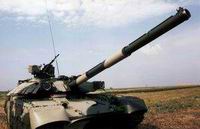 |
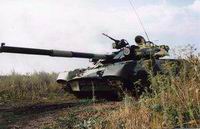 |
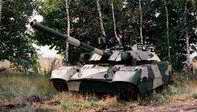 |
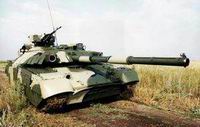 |
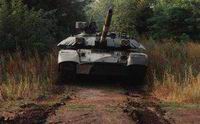 |
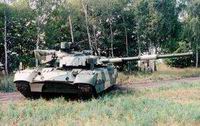 |
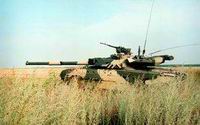 |
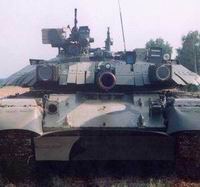 |
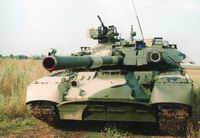 |
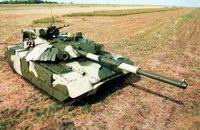 |
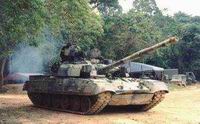 |
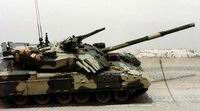 |
 |
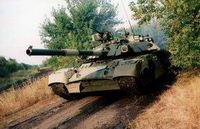 |
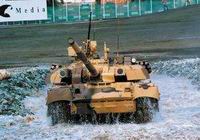 |
 |
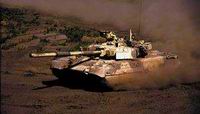 |
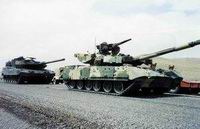 |
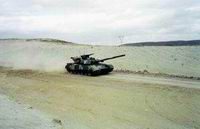 |
